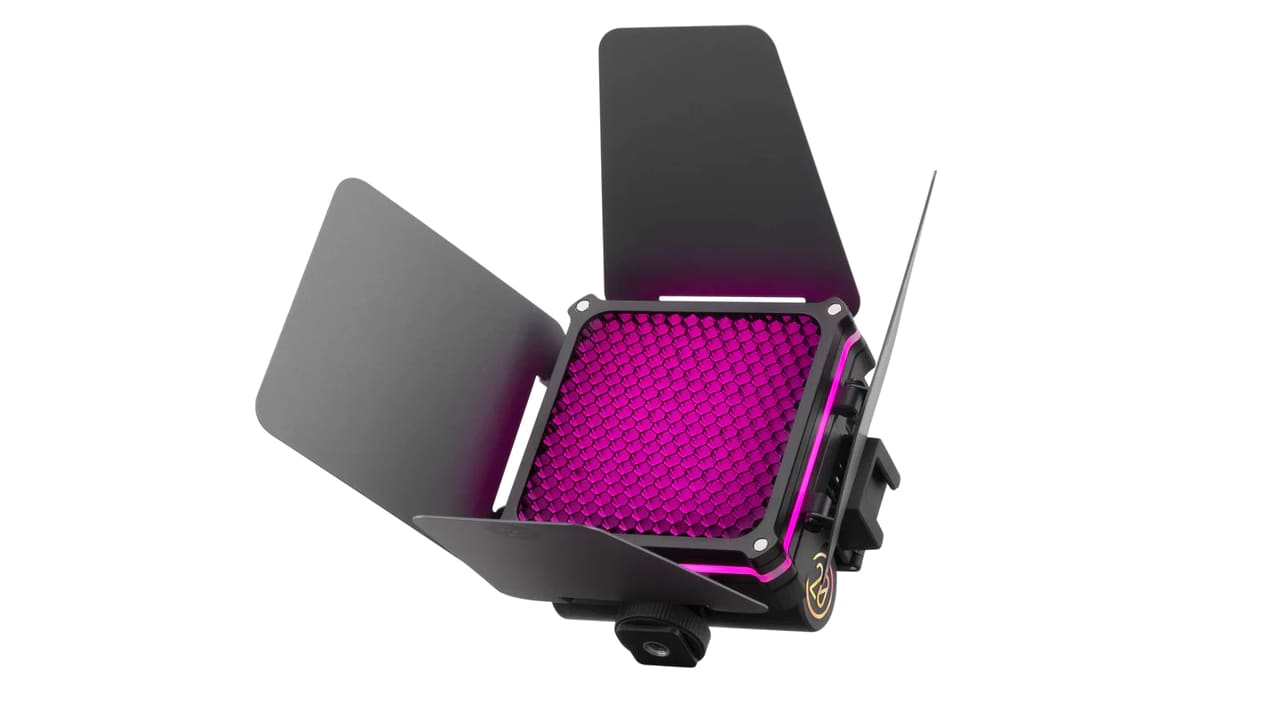
Quite a lot of the photos of Zhiyun’s new LED light show it on a camera, but, like a lot of modern lights, it’s so feature-packed that simply throwing it on a cold shoe is a waste of resources. In a crowded market, though, new ideas have to be very good to do well.
Zhiyun’s Fiveray M20C sounds like a character from a Marvel movie, but the name is presumably a reference to the five channels, with red, green, blue, and two shades of white. A lot of early designs had a tungsten-balanced white and tried to make it into daylight by bleeding in a lot of blue, but the spikiness of the blue diode generally made for poor color quality at the cooler end of the range. Two whites avoids that. It’s a twenty-watt light, and while tungsten isn’t really a meaningful comparison any longer, that might mean two and a bit times the output of a 50W tungsten-halogen MR16 for under half the power.
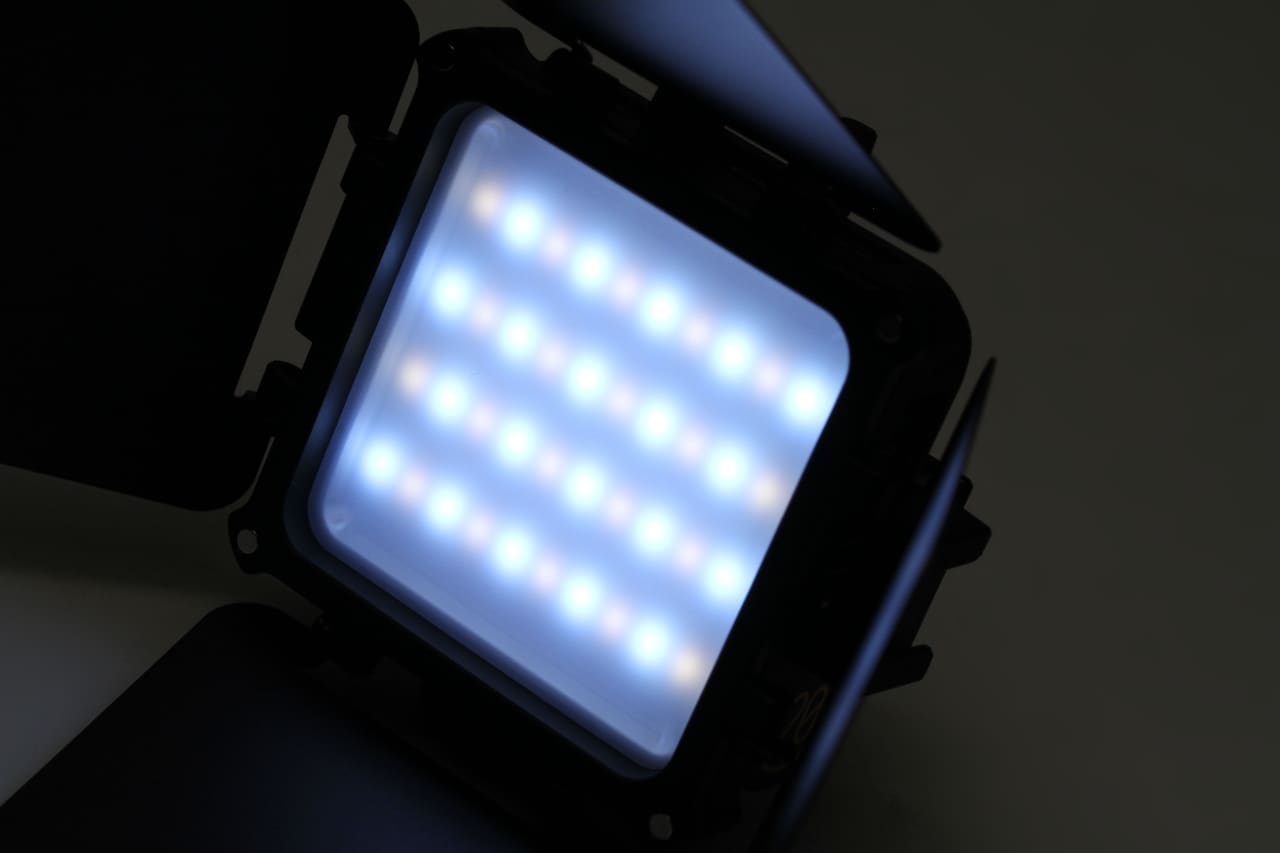
The five in the name seems to be a reference to an RGBWW configuration; here, we clearly see the warmer and cooler white emitters
It’s not quite diffused enough to avoid a hint of segmentation with the supplied barn doors. Barn doors are always a dubious match with lights like this, which Zhiyun describes accurately as a “mini panel” with an emitting area of perhaps 72mm square. Really, the doors operate as a hybrid flag and attenuator. Anything designed to cut the light sharply will need to be larger and further away. There’s a second diffusion panel, which absolutely does remove any hint of segmentation, and a hex grid which does exactly what it’s intended to do. All of the accessories snap quickly into place magnetically, making it easy and fun to try different combinations in different stacking orders.
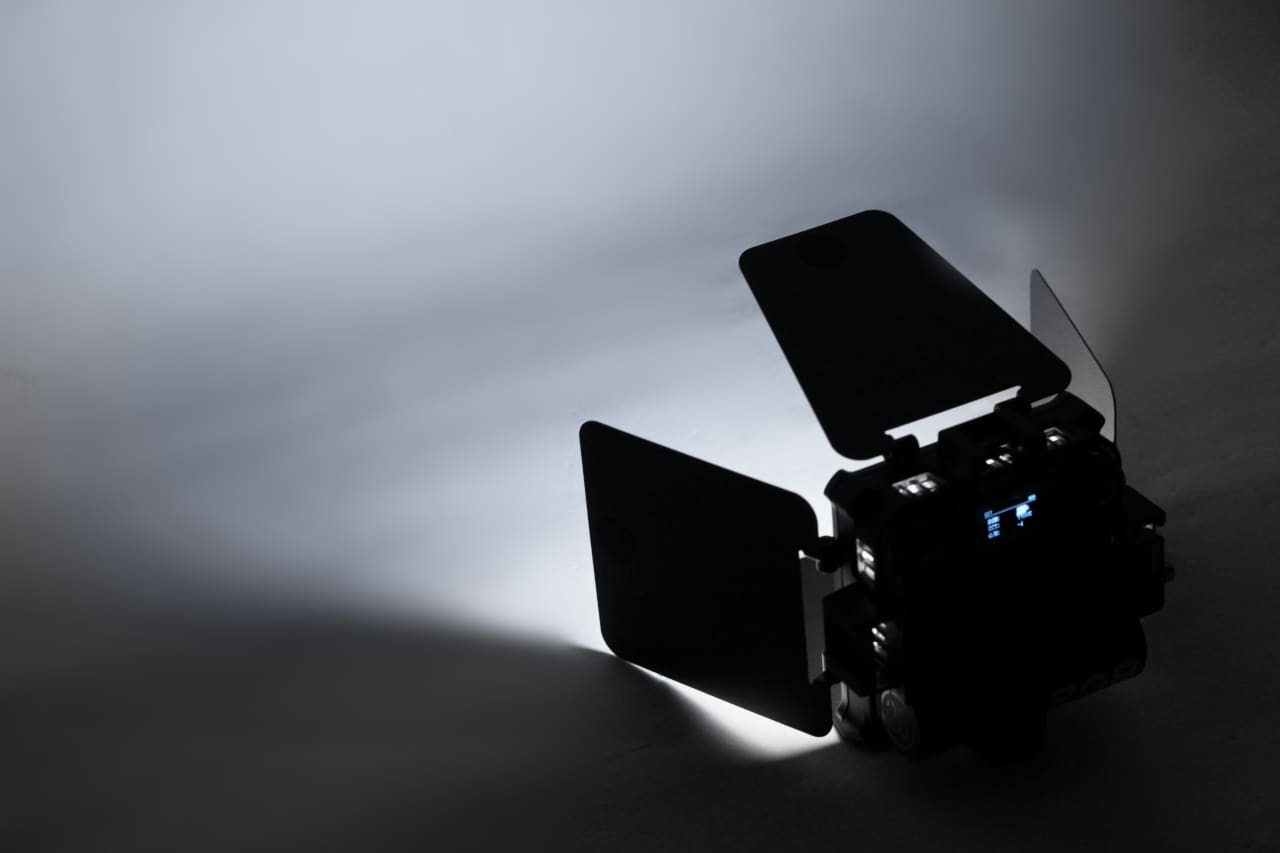
Barn doors are moderately effective at close range. More precision requires bigger solids at longer distances, but that's barely relevant for a light so small
The battery unit, which sticks invitingly out the back as if it were replaceable, is actually permanently installed, with charging via USB-C (no charger is supplied). The company claims endurance of about forty minutes at full throttle, which seems to be roughly what we get, after which it’s time to find a USB cable connected to some power. This is inevitably an actively-cooled unit; you can’t put twenty watts’ worth of LED emitters in such a compact space without a fan. The fan is, therefore, also small and less effective from a noise-to-air-movement perspective. It’s not particularly noisy, but this perhaps makes the M20C perhaps less suitable for on-camera use since the fan will be very near any on-camera microphone.
Physically, the light itself is barely bigger than that 72mm emitting area; it’s 77mm square by 35mm deep and weighs a mere 200g. It’s supplied in a plastic mounting frame, including cold-shoe mounts and the magnetic latch system for the modifiers, with more magnets on the back to mount it to any ferromagnetic object. Most M20Cs will spend their lives in the frame because, without it, there are no mounting options. It’d be nice to see a quarter-inch mounting hole on the bottom for a minimal setup, but overall, the whole thing seems pretty well put together.
The hex grid is possibly the most useful modifier, producing a pleasant soft-edged spot; it'll never be a shadowcaster like a Fresnel, but grids are generally nice
Because this is Space Year 2023, there is a little display on the back and two rotary controls with which we navigate the menu. Switch-on is sluggish; it wants a short then a long press on the leftmost control, after which there’s a delay of at least four seconds before photons come out. That feels like a long hundred frames not to be shooting some unrepeatable bit of documentary content. Often, this means a microcontroller is waiting for an update, but it’s a common malady and seems unnecessary; really, is it doing anything so advanced it couldn’t boot up in a tenth of a second?
Beyond that, controls are conventional. There are white light and two different color modes. We could ask the same question we ask of almost every LED light: why isn’t white light just light of zero saturation? Either way, the options are comprehensive, and there’s enough adjustment of magenta-green shift and color temperature to match the whites to a wide variety of available lighting scenarios. The usual photo flash, fire, TV, and lightning effects are present and correct, and there’s a setting that listens to an internal microphone to produce a light show timed to music.
Colour control is good at medium to high intensity. It’s less good at low settings, where a tendency for output from each color channel to fall suddenly to zero at very low levels compromises accuracy somewhat. TLCI remains solid throughout, minimizing any offset between what the light looks like to the eye and what it looks like on camera.
Based on tests between 2800K and 6500K and at 5, 50, and 100% output, TLCI is never below 97.8. The highest output is 559 lux, measured at a meter in the beam center at 6500K. That’s slightly unexpected; often, lights designed for maximum output peak around 4200K. 3200K output is 490 lux, just a hint dimmer, which is possibly an artefact of the inherently lower efficiency of converting more of a blue LED’s output to yellow. R9 reds numbers never fall below 89, and that at the less accurate 5% output setting. R12 blues fall to 81 at 6500K, which is not perfect, although it’s a technical limitation intrinsic to currently available blue LED emitters and thus endemic to the LED lighting market in general.
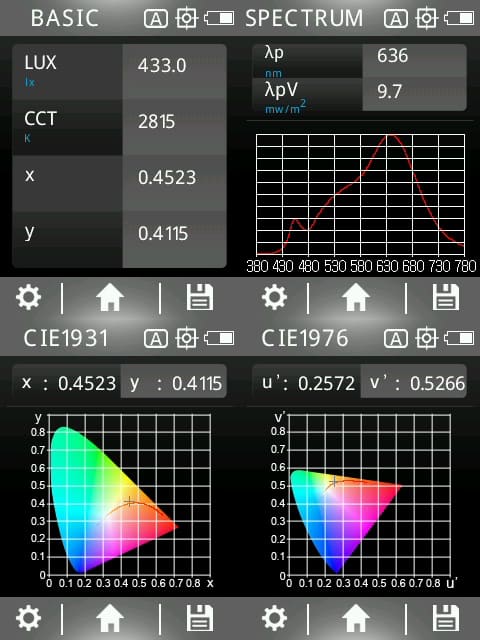
The spectrum is reasonably well-filled at the brighter, cooler end of the spectrum
Other than that awkward switch-on delay, there are no huge red flags. Fixed batteries don’t make everyone happy, but in the end, the light is well priced; it’s pushing three times the output of an Aputure MC Pro, and at around $159 direct from Zhiyun, it’s considerably less expensive. Without the modifiers, it’s a mere $109. Conversely, while there is a cellphone app for the M20C, it doesn’t have the sophisticated control options of the MC Pro, and the MC Pro is silent and weatherproof.
It’ll be interesting to see if the company decides to evolve this light engine into something bigger, perhaps in the 150-watt range. Yes, there are a lot of medium-sized lights on the market, but that could also be said about the small-light market, too, and that didn’t dissuade the company from creating an interesting option in the M20C.
Tags: Production Lighting
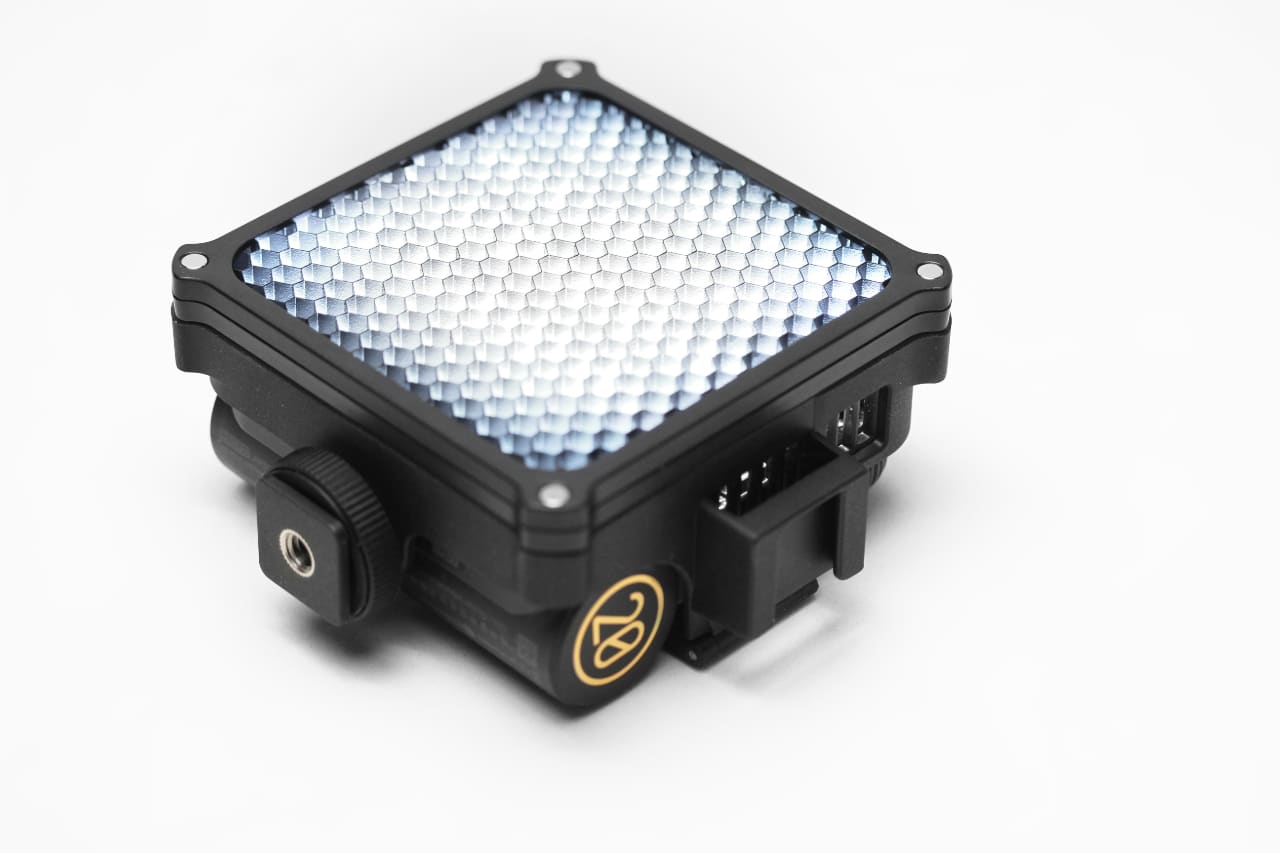


Comments